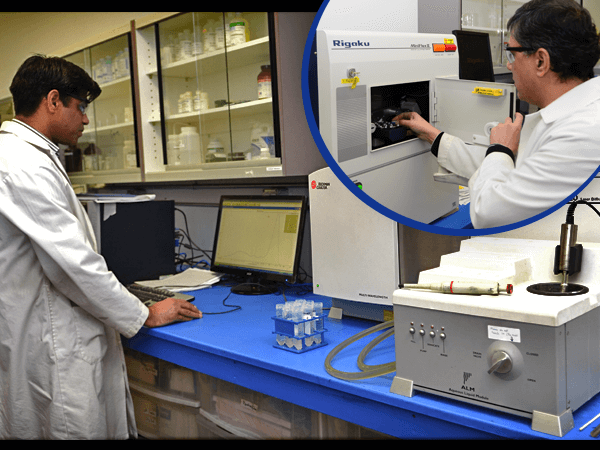Laser Diffraction Particle Size Distribution (LD-PSD)

Laser Diffraction Particle Size Distribution measurements are now routinely employed for unconsolidated reservoir samples (such as cleaned oil sands, or crushed reservoir samples) and soil characterization.
A Laser Diffraction measurement works on the principle that particles of a given size diffract light at a given angle. The angle of diffraction is inversely proportional to particle size, and the intensity of the diffracted beam at any angle is a measure of the number of particles with a specific cross-sectional area in the optical path. A parallel beam of monochromatic light passes through a suspension contained in a sample cell, and the diffracted light is focused onto detectors. The Fraunhofer theory of diffraction or Mie theory is used to calculate the particle size from the diffracted light intensity by modeling. Both theories assume that the particles have a spherical shape and that the particles have equivalent diameter of a sphere having the same volume as that of the particle. The results can be represented numerically (tabular form) or graphically. When presented graphically, there are two types of distribution; differential and cumulative. The differential distribution shows the relative amount at each size. The cumulative undersize distribution shows the relative percent amount at or below a particular size.
For LD-PSD, only a small amount of sample is needed (roughly 1g), and it provides highly reproducible results. The measuring range for particle size is from 0.04µm to 2000µm.

